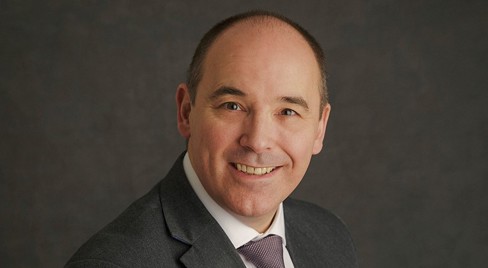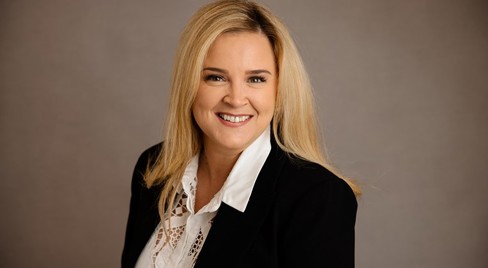You might be confident in your R&D activities, certain that you’ve got a qualifying project for a R&D tax credit claim. But then you start preparing the claim and you find yourself wondering: which costs qualify? How do I prove the time spent? What about that director who doesn't take a salary?
Staff costs typically represent the largest portion of most R&D tax claims, often accounting for 70-80% of total eligible expenditure. Getting this category right can make the difference between a modest claim and one that truly reflects your innovation investment.
Whether you're claiming through the SME scheme, RDEC scheme, or the new Merged Scheme, the principles for staff costs remain largely consistent. Let's break down everything you need to know to claim confidently and accurately.
Which costs can you claim?
For staff working directly on your R&D project, you can claim for a comprehensive range of employment costs that go beyond just their basic salary. The eligible costs include:
- Salaries and wages – The fundamental employment cost that forms the bulk of most claims
- Bonuses – Performance-related payments and annual bonuses
- Pension fund contributions – Employer contributions to company pension schemes
- Secondary Class 1 National Insurance contributions – The employer's NI payments
- Reimbursed expenses – But only those paid by the employee first and later reimbursed
Important caveats to remember
Reimbursed expenses have a specific requirement: the employee must personally pay for the qualifying expense and then claim it back from the company. If a staff member uses a company credit card to pay for R&D-related travel, that cost can't be included in your claim. However, if they pay with their own money and get reimbursed, it qualifies.
Director's pay presents a common challenge for startups and smaller companies. Many directors choose to take dividends rather than salaries for personal tax efficiency. However, dividend payments cannot be claimed in R&D tax relief. If your directors are heavily involved in R&D work, it may be worth considering paying them a salary instead, as this can be claimed alongside employer's National Insurance and pension contributions. The benefits should be evaluated case by case, considering both the R&D tax benefit and personal tax implications.
HMRC introduced an additional cap related to your PAYE/NIC contributions too. This impacts the total amount of credit you can claim – more on this below.
How can you apportion staff costs?
It’s unlikely that any of your staff spent 100% of their time on a single R&D project in a year; there always seems to be something to do to distract you from your job!
For staff working on multiple projects, you’ll need to apportion their time across them, focusing only on the R&D activities.
For example, if your CTO spends 25% of his time across the year on project 1, 20% on project 2 and 5% on project 3, then you can claim a total of 50% of his costs for the year, assuming all that time was on eligible R&D work.
HMRC expects companies to maintain accurate records of staff time spent on qualifying R&D activities. The key principle is that your apportionment method must be "just and reasonable" and consistently applied. There are several approaches you can take:
- Contemporary timesheets represent the gold standard for apportionment. Having staff record their time against specific projects and activities as they work provides the strongest evidence for your claim.
- Project time estimation works where detailed timesheets aren't practical. This involves retrospectively estimating time spent on R&D based on project records, milestones, and deliverables. While less precise than real-time tracking, it can be acceptable if supported by good project documentation.
- Managerial assessment may be appropriate for smaller teams where managers have direct oversight of staff activities. Senior staff can assess the proportion of time their team members spent on R&D versus other activities.
Documentation and consistency
Whatever method you choose, documentation is crucial. HMRC may request evidence during a compliance check, so maintain records that support your apportionment calculations. Consistency matters too – use the same methodology across your organisation and from year to year unless circumstances genuinely change.
When using Tax Cloud, our timesheet module allows you to better estimate R&D time throughout the year, eliminating guesswork and providing robust documentation. You’ll be able to enter the time staff spent on R&D per day, week or month, and per project, and let us do all the work of calculating the totals.
Understanding the PAYE/NIC cap
The PAYE & NIC cap is a compliance measure that affects loss-making SMEs claiming payable cash credits. It's designed to prevent companies from conducting R&D abroad while claiming UK tax relief with minimal UK economic benefit.
The cap limits payable tax credits to 300% of a company's combined PAYE and National Insurance liabilities, plus a £20,000 buffer. HMRC defines this as £20,000 plus three times the company's "relevant expenditure on workers."
"Relevant expenditure on workers" includes:
- Total PAYE and NIC liabilities for all company employees and directors (regardless of R&D involvement)
- PAYE and NIC for connected externally provided workers
- PAYE and NIC for connected subcontractors
Exceptions to the cap
Not all companies are affected by this restriction. You're exempt from the cap if:
- Your payable credit is under £20,000
- Your employees are creating, preparing to create, or actively managing intellectual property AND your expenditure on connected party subcontracted work or EPWs is less than 15% of total R&D expenditure
For companies claiming under the Merged Scheme, any amount exceeding the cap is carried forward as an expenditure credit for the next accounting period.
Which staff roles can you claim for?
There's no prescribed list of job titles that qualify for R&D tax relief. The test is whether the individual's work directly contributes to resolving scientific or technological uncertainty, regardless of their formal role.
Common qualifying roles
Your R&D project team might typically include:
- Direct contributors – Engineers, developers, technicians, scientists, and researchers working hands-on to resolve technical challenges.
- Supervisory roles – Team leaders, department managers, and product managers overseeing R&D activities and making technical decisions.
- Senior management – CTOs, technical directors, or even CEOs in smaller companies who work directly on qualifying activities or make key technical decisions.
- Support functions – Staff involved in qualifying indirect activities such as technological research, project administration, or specialist HR recruitment for R&D roles.
The “competent professional” requirement
HMRC requires that R&D activities be overseen by a "competent professional" - someone with relevant scientific or technological expertise who can ensure the work addresses genuine uncertainties. This doesn't mean they need specific qualifications, but they should have appropriate knowledge and experience in the relevant field.
Eligible indirect activities
Not all R&D work involves direct problem-solving. You can also claim for staff time spent on qualifying indirect activities that support the R&D process, such as:
- Project planning and technical documentation
- Quality assurance specifically for R&D outcomes
- Specialised recruitment for R&D roles
- Specific maintenance, security, administration, and clerical duties related to R&D
- Feasibility studies
Let's try this in a real-world example
To bring this together, let's look at Tech Innovations Ltd, a software company developing an AI-powered fraud detection system for the financial sector.
Sarah Chen (Full-time Developer)
- Salary £50,000, employer NI £5,000, pension contributions £2,500.
- Sarah spent 80% of her time developing the core machine learning algorithms.
- Claimable costs: £46,000 (80% of £57,500 total employment cost).
Mark Thompson (Part-time Data Scientist)
- Works 3 days per week, salary £30,000, employer NI £3,000, pension contributions £1,500.
- Mark spent 60% of his time on R&D activities including algorithm testing and data analysis.
- Claimable costs: £20,700 (60% of £34,500 total employment cost).
Dr. Lisa Patel (Technical Director)
- Takes a salary of £40,000 (could take more as dividends but chooses salary to support R&D claims), employer NI £4,500, pension contributions £2,000.
- She spent 30% of her time providing technical oversight and making key architectural decisions.
- Claimable costs: £13,950 (30% of £46,500 total employment cost).
James Wilson (Finance Manager)
- Salary £45,000, employer NI £4,800, pension contributions £2,250.
- James spent 5% of his time on qualifying indirect activities including project budget planning and coordinating with the competent professional.
- Claimable costs: £2,602 (5% of £52,050 total employment cost).
Total staff costs claimed: £93,663
The company maintained detailed timesheets showing each person's R&D activities, providing strong evidence for their apportionment. Dr. Patel serves as the competent professional, ensuring the technical work addresses genuine scientific uncertainties in fraud detection algorithms.
Not sure if you can claim? Get in touch!
Staff costs might represent the biggest portion of your R&D tax claim, but they don't have to be the most complicated. With proper time tracking, clear documentation, and an understanding of the rules, you can confidently claim the full value of your team's innovative work.
Get in touch with the experts at Tax Cloud for a free review of your staff costs and overall R&D tax position. We're always happy to discuss the specifics of your situation and help ensure you're claiming every pound you're entitled to. When you work with Tax Cloud, you can focus on innovating while we handle the complexities of maximising your R&D tax relief.







